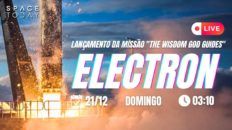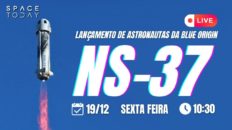VENHA PARTICIPAR DO CURSO DE ASTRONOMIA DO SPACE TODAY:
http://academyspace.com.br/bigbang
—————————————————–
ASSISTA O VÍDEO DA NED:
https://www.youtube.com/watch?v=ywmXvsHBBp4
——————————————————————–
VISITE A LOJA DO SPACETODAY:
https://www.spacetodaystore.com
——————————————————————–
SEJA MEMBRO DO SPACE TODAY E AJUDE COM A CRIAÇÃO DE CONTEÚDO SÉRIA NA ÁREA DE ASTRONOMIA:
https://www.patreon.com/spacetoday
https://www.youtube.com/channel/UC_Fk7hHbl7vv_7K8tYqJd5A/join
——————————————————————–
An international research team led by members of the Max Planck Institute for Gravitational Physics (Albert Einstein Institute; AEI) has obtained new measurements of how big neutron stars are. To do so, they combined a general first-principles description of the unknown behavior of neutron star matter with multi-messenger observations of the binary neutron star merger GW170817. Their results, are more stringent by a factor of two than previous limits and show that a typical neutron star has a radius close to 11 kilometers. They also find that neutron stars merging with black holes are in most cases likely to be swallowed whole, unless the black hole is small and/or rapidly rotating. This means that while such mergers might be observable as gravitational-wave sources, they would be invisible in the electromagnetic spectrum.
Sources:
https://www.mpg.de/14575466/how-big-is-a-neutron-star?c=2249
https://arxiv.org/pdf/1908.10352.pdf
#NeutronStar #GravitationalWave #SpaceToday






Comente!